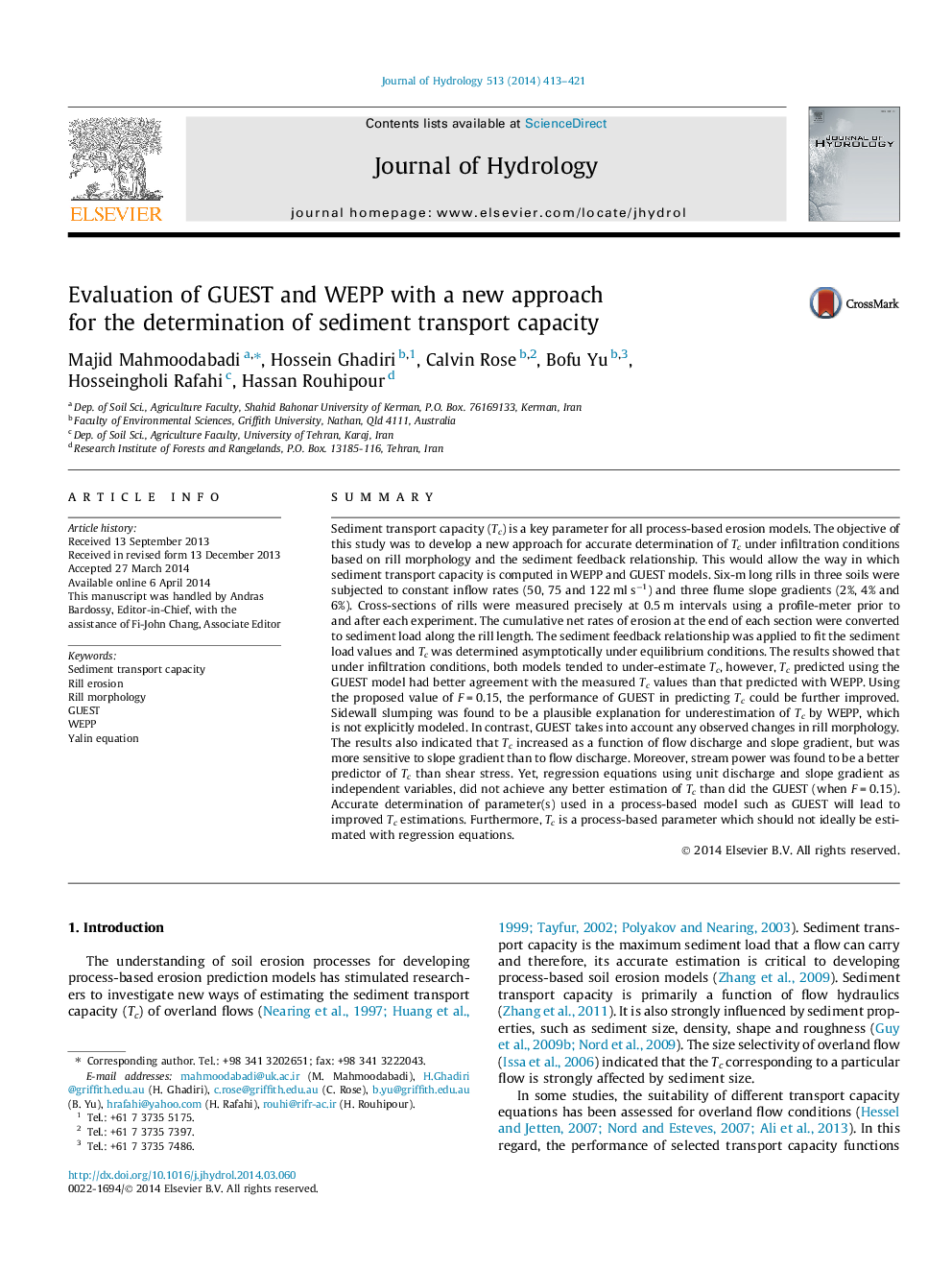| Article ID | Journal | Published Year | Pages | File Type |
|---|---|---|---|---|
| 6412790 | Journal of Hydrology | 2014 | 9 Pages |
â¢A new approach was developed to determine sediment transport capacity (Tc).â¢The GUEST model showed better predictions of Tc than did the WEPP model.â¢Considering F = 0.15, the performance of GUEST in predicting Tc was further improved.
SummarySediment transport capacity (Tc) is a key parameter for all process-based erosion models. The objective of this study was to develop a new approach for accurate determination of Tc under infiltration conditions based on rill morphology and the sediment feedback relationship. This would allow the way in which sediment transport capacity is computed in WEPP and GUEST models. Six-m long rills in three soils were subjected to constant inflow rates (50, 75 and 122 ml sâ1) and three flume slope gradients (2%, 4% and 6%). Cross-sections of rills were measured precisely at 0.5 m intervals using a profile-meter prior to and after each experiment. The cumulative net rates of erosion at the end of each section were converted to sediment load along the rill length. The sediment feedback relationship was applied to fit the sediment load values and Tc was determined asymptotically under equilibrium conditions. The results showed that under infiltration conditions, both models tended to under-estimate Tc, however, Tc predicted using the GUEST model had better agreement with the measured Tc values than that predicted with WEPP. Using the proposed value of F = 0.15, the performance of GUEST in predicting Tc could be further improved. Sidewall slumping was found to be a plausible explanation for underestimation of Tc by WEPP, which is not explicitly modeled. In contrast, GUEST takes into account any observed changes in rill morphology. The results also indicated that Tc increased as a function of flow discharge and slope gradient, but was more sensitive to slope gradient than to flow discharge. Moreover, stream power was found to be a better predictor of Tc than shear stress. Yet, regression equations using unit discharge and slope gradient as independent variables, did not achieve any better estimation of Tc than did the GUEST (when F = 0.15). Accurate determination of parameter(s) used in a process-based model such as GUEST will lead to improved Tc estimations. Furthermore, Tc is a process-based parameter which should not ideally be estimated with regression equations.
